Would you like to replace some or all of your boring, high-maintenance grass with
something else? Perhaps you want a flower/shrub/vegetable bed. Or maybe you would like to
replace the grass with pebbles, river rock, or something else.
One option of course is to mechanically till the lawn with a roto-tiller. But maybe your back yard is not
easily accessible or you don't want to spend the money. Or maybe your grass is the thick matted
kind combined with hard clay soil and it's doubtful that a machine can penetrate it. Or perhaps
the area is relatively small.
In any case, here's some tips on digging up the grass and turning it over yourself. I should
probably add that it might not be the easiest thing you've ever done. But think of it as a
period of really, really good exercise!
So Here's the "Before" |
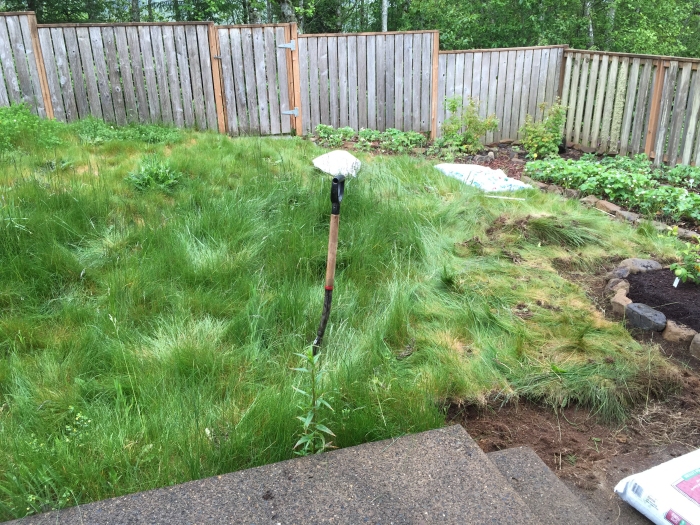 |
This is what the grass looks like on the Oregon coast in Spring (the middle of May). In
Oregon there is almost no rain during the summer, so the grasses all dry up. During the long rainy season
starting in October, all the grasses green up.
In other words, our grasses are green in the winter and brown in the summer!
This particular variety forms a thick, dense, almost impenetrable mat. Furthermore my soil is hard clay.
So I figured (somewhat ambitiously) to dig it up by hand. So here goes. . .
Here's how to dig up grass
It helps to mow the grass first. I don't have a lawn mower, |
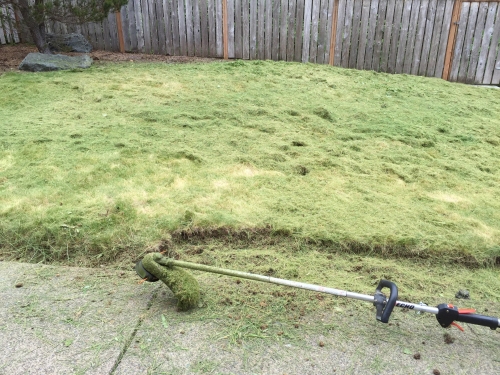 |
Work in sections about 3-4 feet wide. It helps greatly to first scalp the grass as much as possible with a weed whacker, if you have one. (That's why the grass looks "dead".) I found it best to work a 3 to 4 foot wide swath of grass. Push the shovel down as far as you can. Straight down is best, but at an angle is fine if the soil is too hard. |
Now tilt the shovel back (toward you) to pry up the grass |
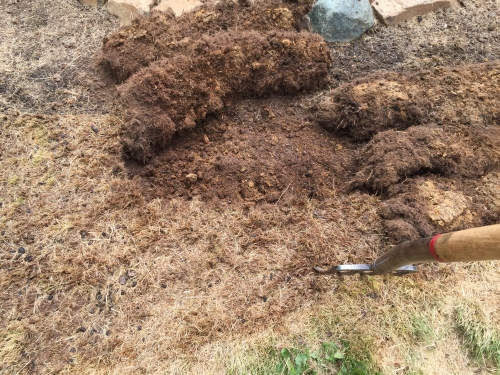 |
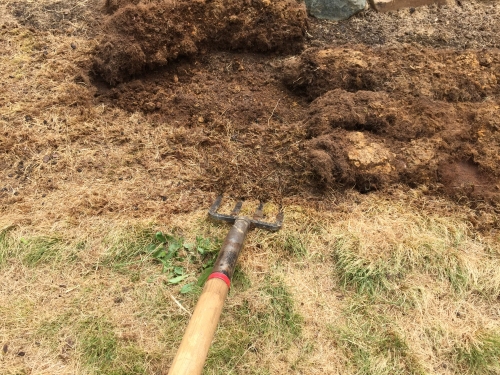 |
Then tilt the shovel forward to separate the section of grass from the part you are standing on. |
After you have done this about 4 times, tilt up the entire 3 - 4 foot section and turn it over HINT: Lay the first one or two sections out of the way. (See the first picture above.) This leaves you room to simply overturn each section as you dig it up. |
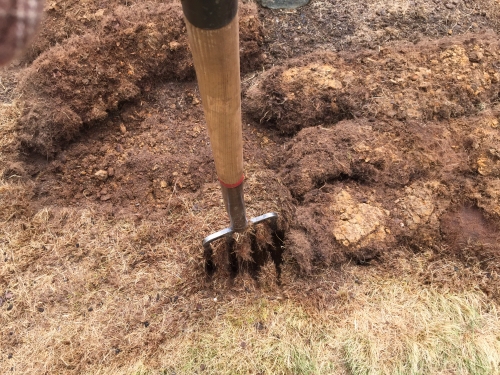 |
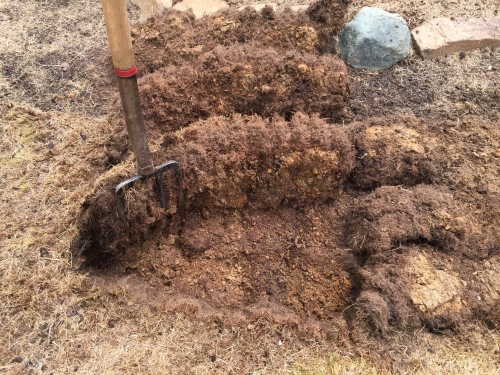 |
After you turn a section over, break up the soil with a hoe, to even it up a bit and break up any exposed clods. |
Here is a 4 foot wide area of overturned grass sections. The two sections in the foreground need some hoe work. |
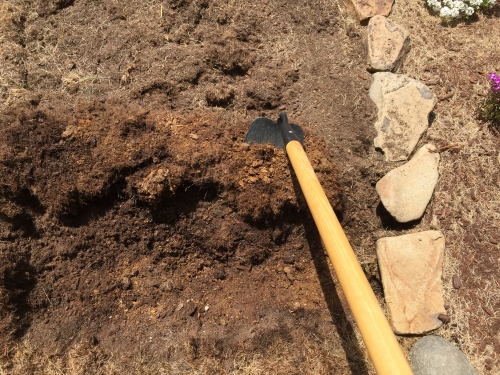 |
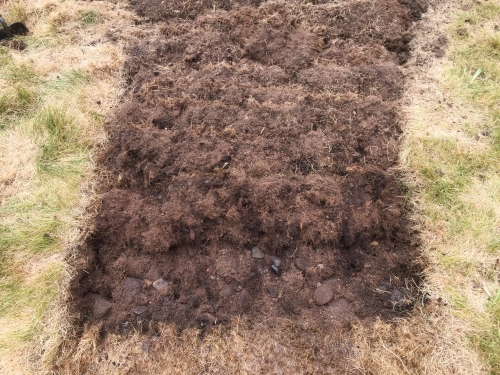 |
OK. Here's the drill again: Tool in the ground as far as you can. These three pictures were taken a bit later, after the grass was dead, due to the typical dry Oregon summers. |
Handle down (pries up the grass) |
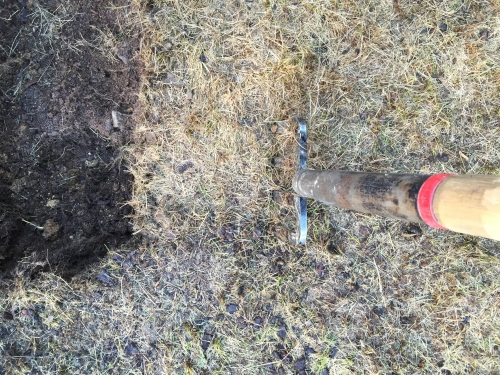 |
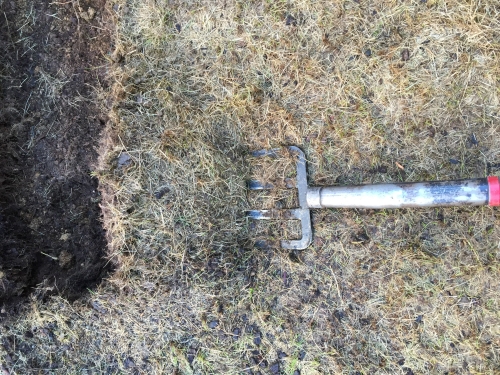 |
Handle up (breaks the section of grass away from the main area) |
|
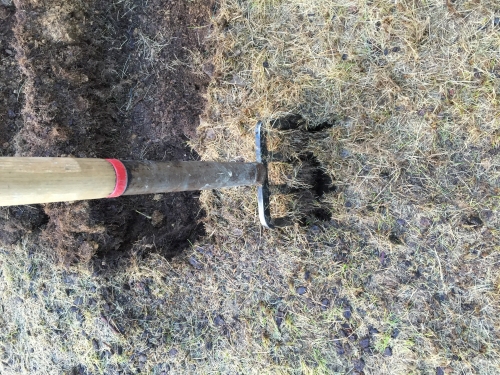 |
And Here's the "After" (grass removed)All the %#@!!! grass has been turned over in the entire yard except for the small section where I have
some rocks and pavestones temporarily stored. |
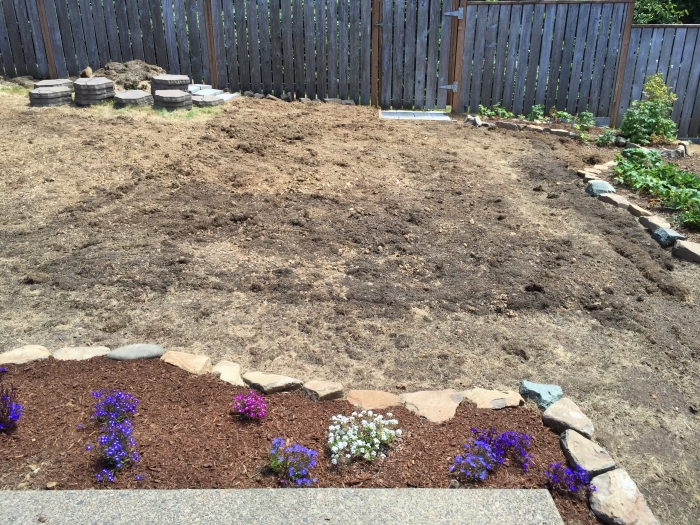 |
So the "plan" was to replace the bark nuggets and the (formerly) grassy areas with various types of "Greensmix" pea gravel; $3.50/bag, Lowes (Home Depot has similiar material) "Greensmix" river rock; $3.50/bag, Lowes "3/4 inch drain rock"; $6.00/bag, from a local supplier |
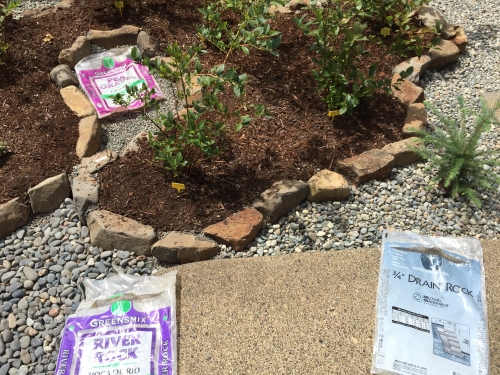 |
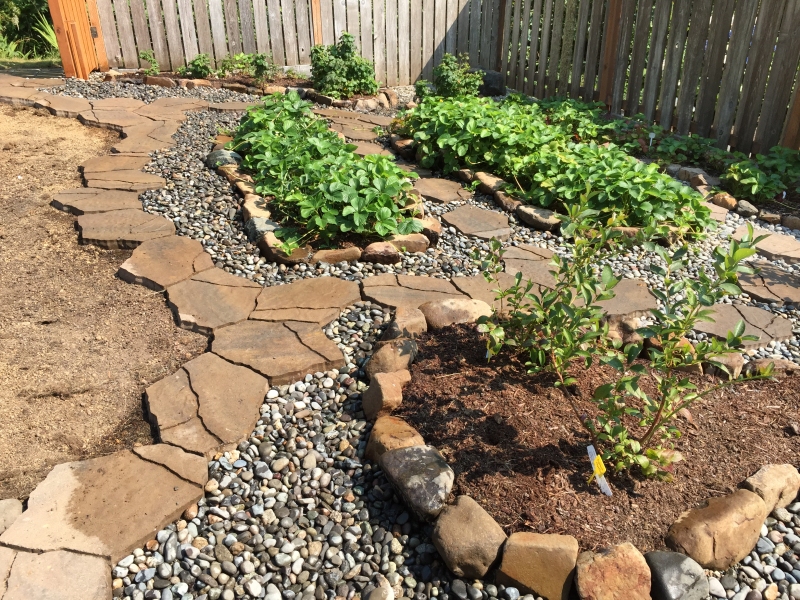 |
So here's the final result for the West end with the rock gardens.
All coarse bark mulch has been replaced with river rock. This is what it looked like at the end
of summer, 2018. |
And Here's the "Final" (summer 2019)!The large areas have the "Greensmix" river rock, with gravel accents in two smaller areas. I replaced the flowering plants in the patio border with various varieties of "hebe" shrubs and two dwarf Alberta Spruces. |
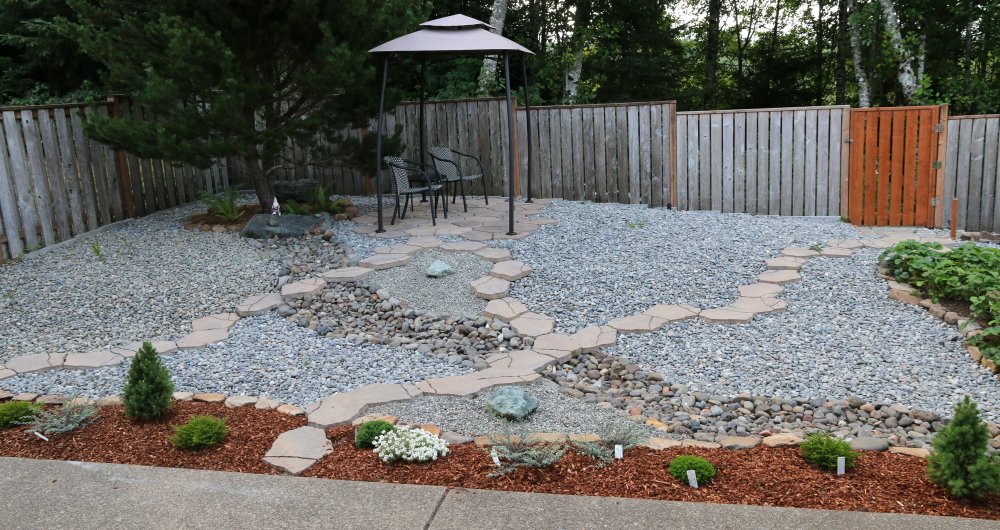 |
Copyright © 2019 J.A.